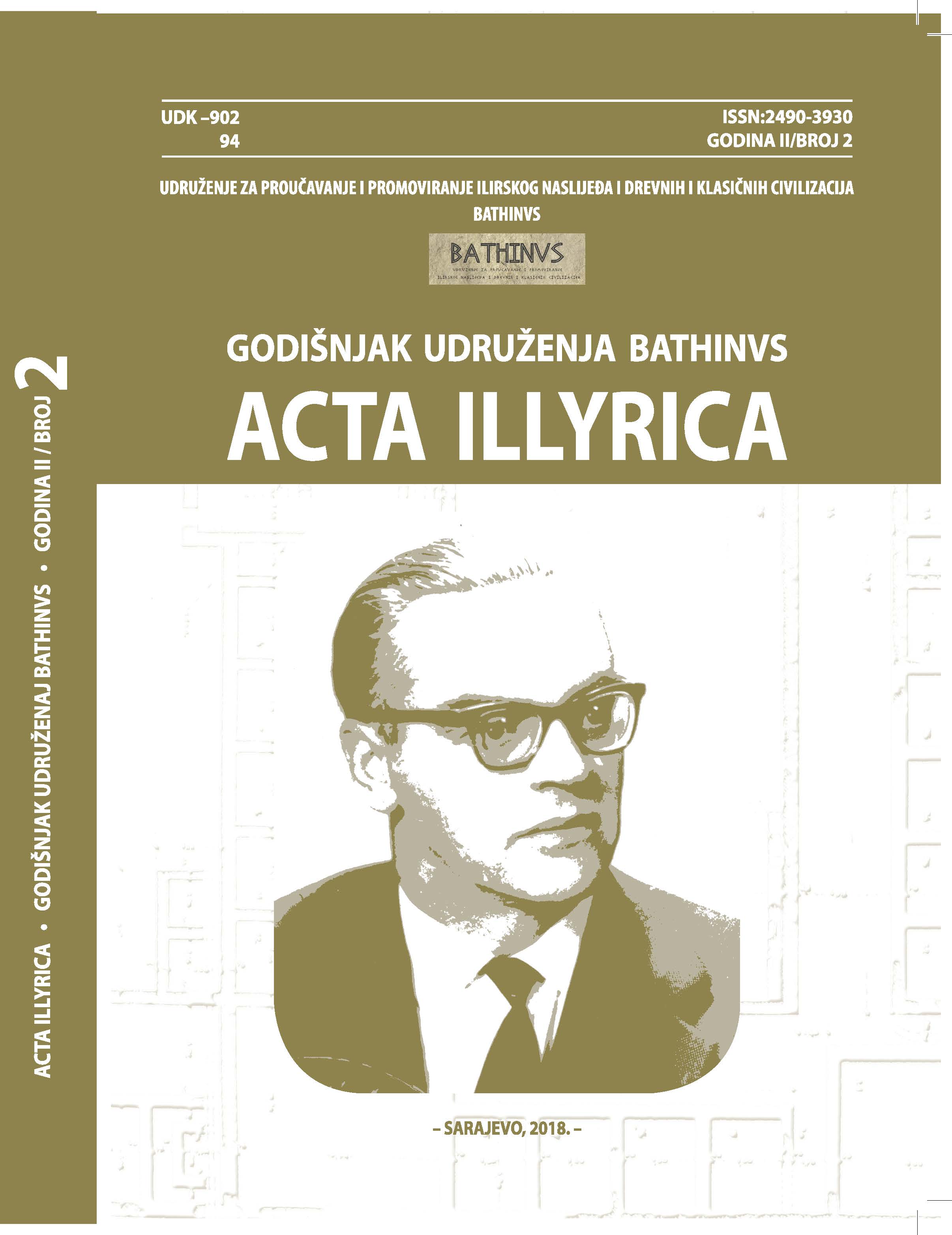PROSOPOGRAPHIA BELLI BATONIANI: Augustovi legati u mreži međusobnih veza i interesa
Prosopographia Belli Batoniani: Augustus’ legates in a network of mutual connections and interests
Author(s): Alka Domić KunićSubject(s): Diplomatic history, Military history, Political history, Ancient World
Published by: Udruženje za proučavanje i promoviranje ilirskog naslijeđa i drevnih i klasičnih civilizacija “BATHINVS”
Keywords: Octavian Augustus; Augustus’ family; Pannonian-Dalmatian uprising; legati Augusti pro praetore;military commanders;
Summary/Abstract: Victorious in the battle against Mark Antony for mastery over Rome, Octavian gradually revised the previously existing Republican system with a new regime, in which the "first among the equals" was in fact the sovereign ruler. Aiming to secure his power and its undisturbed succession in the next generation of Julio-Claudians, Octavian placed his own men in key positions in the state. These were not only individuals who were in a client relationship with Octavian Augustus, but also individuals whom the Princeps tied to his own family with marriage bonds; in that way he made a wide network of kin and marital interdependency on himself.This paper deals with a small section of that network - with Augustus' legates who fought in Illyricum between 6 and 9 AD. These were the governors of three provinces - Illyricum, Moesia and Galatia - whose armies participated in the suppression of the great Pannonian-Dalmatian uprising. All three provinces were imperial, which means that the Princeps, and not the Senate, was in charge for election of their administrators. Illyricum, Moesia and Galatia are clear examples of the political and personal network Augustus cast over the Empire, and represent a model that was to be applied in other provinces - even those under senatorial authority.Narratives of historical sources about the Pannonian-Dalmatian uprising mention seven pivotal individuals in leading positions in the Roman army, in legions that during the three wartime years operated in Illyricum. These are: Tiberius (commander-in-chief of the joint military force - No. 4), Germanicus (his subordinate, a member of Augustus' immediate family - No. 5), Marcus Valerius Messalla Corvinus Messallinus (governor of Illyricum in the year of the outbreak of the uprising - No. 9), Aulus Caecina Severus (governor of Moesia - No. 7), Marcus Plautius Silvanus (governor of Galatia - No. 8), Marcus Aemilius Lepidus (governor of Pannonia, northern part of recently divided Illyricum, in the last year of the war - No. 6), and Caius Vibius Postumus (governor of Dalmatia, southern part of recently divided Illyricum, in the last year of the war - No. 10). A number has been assigned to each of these men to fascilitate the tracking of their complex relations by blood and marriage which tied most of them mutually, and with Augustus himself. Numbers are also assigned to Augustus (No. 1), Mark Antony (No. 2) and Marcus Vipsanius Agrippa (No. 3), whom the Princeps firmly tied with his family.A short survey of activities of these seven legates in Illyricum during the war (6-9 AD) is followed by the second part of the paper that minutely explains their blood and marital relations. To each of the other persons relevant to our narrative a number is also assigned in order to track them through Augustus' network. Extensive analysis of their mutual relations show that some of them were firmly related through family to the Julio-Claudians (Valerius Messallinus and Aemilius Lepidus), some were tied with client more than marital bonds (Plautius Silvanus), and some apparently were not highly dependent on Princeps (Caecina Severus and Vibius Postumus). However, all of them constituted important parts of the network which Augustus threw over the Empire, providing for himself and his successors secure and firm power, and for the State the long desired pax Romana.
Journal: Godišnjak Udruženja BATHINVS “Acta Illyrica”
- Issue Year: 2/2018
- Issue No: 2
- Page Range: 83-129
- Page Count: 47
- Language: Croatian

